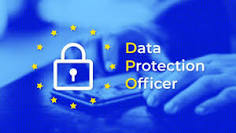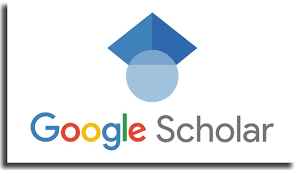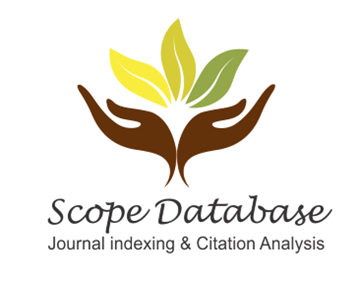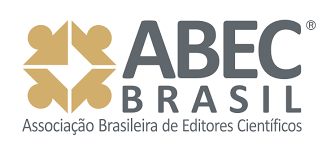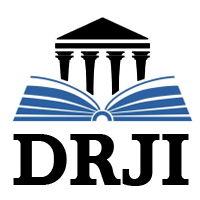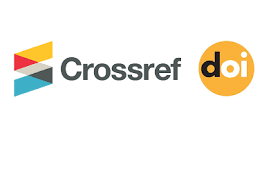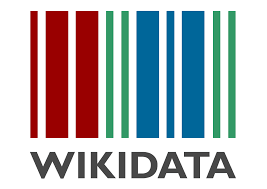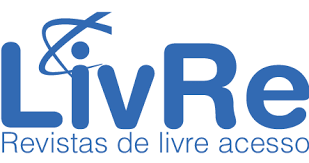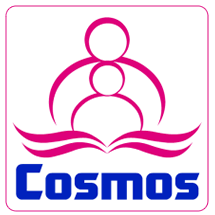EDUCACIÓN MULTICULTURAL Y JUEGOS USANDO REALIDAD AUMENTADA EN TDAH
DOI:
https://doi.org/10.47820/jht.v3i1.50Palabras clave:
Trastorno por déficit de atención e hiperactividad (TDAH). desarrollo social y emocional. TIC. Juegos de realidad aumentada (AR).Resumen
Según datos recientes, muchas comunidades en todo el mundo son hoy en día multiculturales. Se cree que la cultura tiene un impacto significativo en la creación de materiales terapéuticos, modelos de práctica, instrumentos de evaluación y colaboración con el cliente. Además, trabajos recientes abordan la interacción entre un terapeuta y un cliente y la necesidad de comprender las necesidades sociales de un niño. Incluso con avances significativos en el desarrollo y administración de tratamientos eficientes para niños con TDAH, los jóvenes y adolescentes de minorías étnicas continúan rezagados respecto de sus pares que no pertenecen a minorías en términos de tasas de diagnóstico y tratamiento. Varios obstáculos de aprendizaje y de comportamiento están relacionados con este trastorno debido a dificultades de funcionamiento cognitivo y metacognitivo. Los individuos sólo pueden integrarse plenamente en la sociedad si han adquirido estas funciones. Los niños pueden adquirir estrategias alternativas para gestionar sus déficits cognitivos y adaptarse a diferentes circunstancias utilizando la atención interna para desarrollar la autoconciencia, la autorregulación y el autocontrol. El rápido progreso de la investigación ha llevado al desarrollo de varias estrategias medicinales y psicológicas para tratar el TDAH, que ayudan significativamente a controlar los síntomas. El objetivo del estudio actual es comprender los diversos enfoques terapéuticos utilizados para ayudar a los niños de minorías raciales y étnicas que padecen TDAH. Estos enfoques incluyen juegos que utilizan entornos de realidad aumentada (AR).
Descargas
Citas
ALQITHAMI, Saad; ALZAHRANI, Musaad; ALZAHRANI, Abdulkareem; AHMED, Mustafa. AR-Therapist: Design and Simulation of an AR-Game Environment as a CBT for Patients with ADHD. Healthcare, v. 7, n. 146, 2019, doi:10.3390/healthcare7040146 DOI: https://doi.org/10.3390/healthcare7040146
AMERICAN PSYCHIATRIC ASSOCIATION. Diagnostic and Statistical Manual of Mental Disorders. 5th ed. [S. l.]: APS, 2013. https://doi.org/10.1176/appi.books.9780890425596 DOI: https://doi.org/10.1176/appi.books.9780890425596
ANGELOPOULOU, E.; DRIGAS, A.; KARABATZAKI, Z. “Assessing working memory in gen- eral education students for ADHD detection,” Research Society and Development, v. 10, n. 10, p. e138101018766, 2021. https://doi.org/10.33448/rsd-v10i10.18766 DOI: https://doi.org/10.33448/rsd-v10i10.18766
ARAT, A.; OSTBERG, V.; BURSTROM, B.; HJERN, A. “ADHD medication in offspring of immigrants—Does the income level of the country of parental origin matter?” BMC Psychiatry, v. 18, n. 3, 2018. https://doi.org/10.1186/s12888-017-1572-z DOI: https://doi.org/10.1186/s12888-017-1572-z
AUERNHEIMER, G. Einführung in die interkulturelle Erziehung [Introduction to Ιntercultural Εducation]. Darmstadt: Wissenschaftliche Buchgesellschaft, 1995.
AVILA-PESANDEZ, Diego; VACA-CARDENAS, Leticia; RIVERA, Luis A.; AGUAYO, Stteffano; Zuniga, Lourdes. Towards the Improvement of ADHD Children through Augmented Reality Serious Games: Preliminary Results. Conference: Global Engineering Education Conference (EDUCON), 2018. Doi:10.1109/EDUCON.2018.8363318 DOI: https://doi.org/10.1109/EDUCON.2018.8363318
AZUMA, R.T. A Survey of Augmented Reality. Presence: Teleoperators Virtual Environ., v. 6, p. 355–385, 1997, doi:10.1162/pres.1997.6.4.355. DOI: https://doi.org/10.1162/pres.1997.6.4.355
BAMICHA V., DRIGAS A. The Evolutionary Course of Theory of Mind - Factors that facilitate or inhibit its operation & the role of ICTs. Technium Social Sciences Journal, v. 30, p. 138-158, 22, DOI:10.47577/tssj.v30i1.6220 DOI: https://doi.org/10.47577/tssj.v30i1.6220
BARBA, Maria Cristina; COVINO, Attilio, DE LUCA, Valerio; DE PAOLIS, Lucio Tommaso; D’ERRICO, Giovanni; DI BITONTO, Pierpaolo; DI GESTORE, Simona; MAGLIARO, Serena; NUNNARI, Fabrizio; PALADINI, Giovanna Ilenia; POTENZA, Ada; SCHENA, Annamaria. BRAVO: A Gaming Environment for the Treatment of ADHD. International Conference on Augmented Reality, Virtual Reality and Computer Graphics, p 394-407, 2019. DOI: https://doi.org/10.1007/978-3-030-25965-5_30
BARROW, J.; FORKER C.; SANDS, A.; O'HARE, D.; HURST, W. Augmented reality for enhancing life science education. [S. l.]: In Proc. of Visual, 2019.
BHOPAL, R. “Glossary of terms relating to ethnicity and race: For reflection and debate,” Journal of Epidemiology and Community Health, v. 58, n. 6, p. 441–445, 2004. https:// doi.org/10.1136/jech.2003.013466 DOI: https://doi.org/10.1136/jech.2003.013466
BILLINGHURST, M.; CLARK, A.; LEE, G. A Survey of Augmented Reality. Found. Trends Hum. Comput. Interact., v. 8, p. 73–272, 2015. DOI: https://doi.org/10.1561/1100000049
BLAND, Diego Zamora; MUNOZ, John Edison; LOPEZ, David Sebastian; AND GALLO OSCAR HENAO, “Influence of a BCI neurofeedback videogame in children with ADHD. Quantifying the brain activity through an EEG signal processing dedicated toolbox,” in IEEE 11th Colombian Computing Conference (CCC), 2016, p. 1–8. https://doi.org/10.1109/ ColumbianCC.2016.7750788 DOI: https://doi.org/10.1109/ColumbianCC.2016.7750788
BRAVOU, V.; DRIGAS, A. A contemporary view on online and web tools for students with sensory & learning disabilities, iJOE v. 15, n. 12, p. 97, 2019. https://doi.org/10.3991/ijoe.v15i12.10833 DOI: https://doi.org/10.3991/ijoe.v15i12.10833
BRAVOU, V.; OIKONOMIDOU, D.; DRIGAS, A. Applications of Virtual Reality for Autism Inclusion. Revista Retos, v. 45, p. 779-785, 2022. https://doi.org/10.47197/retos.v45i0.92078 DOI: https://doi.org/10.47197/retos.v45i0.92078
BURDEA, G. C.; COIFFET, P. Virtual Reality Technology. [S. l.]: John Wiley & Sons, 2003. DOI: https://doi.org/10.1162/105474603322955950
CHAIDI, I.; DRIGAS, A. Digital games & special education. Technium Social Sciences Journal, v. 34, p. 214–236, 2022. https://doi.org/10.47577/tssj.v34i1.7054
CHAIDI, I.; DRIGAS, A. “Digital games & special education,” Technium Social Sciences Journal, v. 34, p. 214–236, 2022. https://doi.org/10.47577/tssj.v34i1.7054 DOI: https://doi.org/10.47577/tssj.v34i1.7054
CHENG, K. H.; TSAI, C. C. Affordances of augmented reality in science learning: suggestions for future research. J Sci Educ Technol, v. 22, n. 4, p. 449–462, 2013. DOI: https://doi.org/10.1007/s10956-012-9405-9
COKER, T.; ELLIOTT, M. N.; TOOMEY, S. L.; SCHWEBEL, D. C.; CUCCARO, P.; DAVIES, S. L.; SCHUSTER, M. A. “Racial and ethnic disparities in ADHD diagnosis and treatment,” Pediatrics, v. 138, n. 3, p. e20160407, 2016. https://doi.org/10.1542/peds.2016-0407 DOI: https://doi.org/10.1542/peds.2016-0407
CUMMINS, J. Negotiating identities: Education for empowerment in a diverse society. Ontariο: California Association for Bilingual Education, 2001.
DEDE, C. Customisation in immersive learning environments: implications for digital teaching platforms. In: DEDE, C.; RICHARDS, J. (eds). Digital teaching platforms customizing classroom learning for each student. New York: Teacher’s College Press, 2012. p. 282–297. DOI: https://doi.org/10.1145/2328736.2336716
DIETRICH, I. Die Bedeutung der interkulturellen Erziehung im Schulalltag [The importance of intercultural education in everyday school life]. Lernen in Deutschland. Zeitschrift für Interkulturelle Erziehung, v. 2, p. 106–117, 1997.
DIKKERS, S.; GAGNON, D.; MARTIN, J.; SQUIR, E K. Participatory scaling through augmented reality learning through local games. TechTrends, v. 58, n. 1, p. 35–41, 2014. DOI: https://doi.org/10.1007/s11528-013-0718-1
DOULOU, A.; DRIGAS, A. “Electronic, VR & augmented reality games for intervention in ADHD,” Technium Social Sciences Journal, v. 28, p. 159, 2022. https://doi.org/10.47577/ tssj.v28i1.5728 DOI: https://doi.org/10.47577/tssj.v28i1.5728
DRAKATOS, N.; TSOMPOU, E.; KARABATZAKI, Z.; DRIGA, A. M. The contribution of online gaming in Engineering education. Eximia, v. 8, p. 14-30, 2023.
DRAKATOS, N.; TSOMPOU, E.; KARABATZAKI, Z.; DRIGA, A. M. Virtual reality environments as a tool for teaching Engineering. Educational and Psychological issues, TechHub Journal, v. 4, p. 59-76, 2023.
DRIGAS, A. S.; DRIGA, M. A. “ADHD in the early years: Pre-Natal and early causes and alternative ways of dealing,” International Journal of Emerging Technologies in Learning (iJET), vo. 15, n. 13, p. 95–102, 2019. https://doi.org/10.3991/ijoe.v15i13.11203 DOI: https://doi.org/10.3991/ijoe.v15i13.11203
DRIGAS, A. S.; KARYOTAKI, M.; SKIANIS, C. “An integrated approach to neuro- development, neuroplasticity and cognitive improvement,” International Journal of Recent Contributions from Engineering, Science & IT (iJES), v. 6, n. 3, p. 4–18. 2018. https://doi.org/10.3991/ijes.v6i3.9034 DOI: https://doi.org/10.3991/ijes.v6i3.9034
DRIGAS, A. S.; MITSEA E. “8 Pillars X 8 Layers model of metacognition educational strategies, exercises & trainings,” International Journal of Online and Biomedical Engineering (iJOE), v. 17, n. 8, p. 115–134, 2021. https://doi.org/10.3991/ijoe. v17i08.23563 DOI: https://doi.org/10.3991/ijoe.v17i08.23563
DRIGAS, A. S.; MITSEA, E. “Metacognition, stress–relaxation balance & related hor- mones,” International Journal of Recent Contributions from Engineering Science & IT (iJES), v. 9, n. 1, p. 4–15, 2021. https://doi.org/10.3991/ijes.v9i1.19623 DOI: https://doi.org/10.3991/ijes.v9i1.19623
DRIGAS, A. S.; MITSEA, E. “The 8 pillars of metacognition,” International Journal of Emerging Technologies in Learning (iJET), v. 15, n. 21, p. 162–178, 2020. https://doi.org/10.3991/ijet.v15i21.14907 DOI: https://doi.org/10.3991/ijet.v15i21.14907
DRIGAS, A. S.; PAPOUTSI, C. “A new layered model on emotional intelligence,” Behav. Sci. (Basel), v. 8, n. 5, p. 45, 2018. https://doi.org/10.3390/bs8050045 DOI: https://doi.org/10.3390/bs8050045
DRIGAS, A.; BAKOLA, L. “The 8x8 layer model consciousness-intelligence-knowledge pyramid, and the platonic perspectives,” International Journal of Recent Contributions from Engineering, Science & IT (iJES), v. 9, n. 2, p. 57–72, 2021. https://doi.org/10.3991/ ijes.v9i2.22497 DOI: https://doi.org/10.3991/ijes.v9i2.22497
DRIGAS, A.; DEDE, D. E.; DEDES, S. Mobile and other applications for mental imagery to improve learning disabilities and mental health. International , Journal of Computer Science Issues (IJCSI), v. 17, n. 4, p. 18-23, 2020, DOI:10.5281/zenodo.3987533
DRIGAS, A.; KARYOTAKI, M. “Attention and its role: Theories and models,” International Journal of Emerging Technologies in Learning, v. 14, n. 12, p. 169–182, 2019. https:// doi.org/10.3991/ijet.v14i12.10185 DOI: https://doi.org/10.3991/ijet.v14i12.10185
DRIGAS, A.; MITSEA, E.; SKIANIS, C. “Clinical hypnosis & VR, subconscious restructur- ing-brain rewiring & the entanglement with the 8 pillars of metacognition x 8 layers of consciousness x 8 intelligences,” International Journal of Online & Biomedical Engineering (IJOE), v. 18, n. 1, p. 78–95, 2022. https://doi.org/10.3991/ijoe.v18i01.26859 DOI: https://doi.org/10.3991/ijoe.v18i01.26859
DRIGAS, A.; MITSEA, E.; SKIANIS, C. Virtual Reality and Metacognition Training Techniques for Learning Disabilities. SUSTAINABILITY, v. 14, n. 16, p. 10170, 2022, https://doi.org/10.3390/su141610170 DOI: https://doi.org/10.3390/su141610170
DRIGAS, A.; MITSEA, E.; SKIANIS, C. “The role of clinical hypnosis & VR in special edu- cation,” International Journal of Recent Contributions from Engineering Science & IT (iJES), v. 9, n. 4, p. 4–17, 2021. https://doi.org/10.3991/ijes.v9i4.26147 DOI: https://doi.org/10.3991/ijes.v9i4.26147
DRIGAS, A.; PAPOUTSI, C. “Nine layer pyramid model questionnaire for emotional intel- ligence,” International Journal of Online & Biomedical Engineering (IJOE), v. 17, n. 7, p. 123–142, 2021. https://doi.org/10.3991/ijoe.v17i07.22765 DOI: https://doi.org/10.3991/ijoe.v17i07.22765
DRIGAS, A.; PAPOUTSI, C.; SKIANIS, C. “Metacognitive and metaemotional training strat- egies through the nine-layer pyramid model of emotional intelligence,” International Journal of Recent Contributions from Engineering, Science & IT (iJES), v. 9, n. 4, p. 58–76, 2021. https://doi.org/10.3991/ijes.v9i4.26189 DOI: https://doi.org/10.3991/ijes.v9i4.26189
DRIGAS, A.; PETROVA, A. “ICTs in speech and language therapy,” International Journal of Engineering Pedagogy (iJEP), v. 4, n. 1, p. 49–54, 2014. https://doi.org/10.3991/ ijep.v4i1.3280 DOI: https://doi.org/10.3991/ijep.v4i1.3280
DRIGAS, A.; SIDERAKI, A. Emotional Intelligence in Autism. Technium Social Sciences Journal, v. 26, n. 80, 2021, https://doi.org/10.47577/tssj.v26i1.5178 DOI: https://doi.org/10.47577/tssj.v26i1.5178
DRIGAS, A.; THEODOROU, P. ICTs and music in special learning disabilities , International Journal of Recent Contributions from Engineering, Science & IT (iJES), v. 4, n. 3, p. 12–16, 2016, https://doi.org/10.3991/ijes.v4i3.6066 DOI: https://doi.org/10.3991/ijes.v4i3.6066
ELMQADDEM, N. Augmented reality and virtual reality in education. Myth or reality? Int J Emerg Technol Learn, v. 14, n. 03, p. 234–242, 2019. DOI: https://doi.org/10.3991/ijet.v14i03.9289
ESSINGER, H. Interkulturelle Erziehung in multiethnischen Gesellschaften [Intercultural education in multi-ethnic societies]. In: MARBURGER, H. (Ed.), Schule in der multikulturellen Gesellschaft. Ziele, Aufgaben und Wege interkultureller Erziehung [School in the multicultural society: goals, tasks and paths of intercultural education]. Frankfurt a. M.: Verlag für Interkulturelle Kommunikation, 1991. p. 3–18.
FROEHLICH, T. E.; LANPHEAR, B. P.; EPSTEIN, J. N.; BARBARESI, W. J.; KATUSIC S. K.; KAHN R. S. “Prevalence, recognition, and treatment of attention-deficit/hyperactivity disorder in a national sample of US children,” Archives of Pediatric Adolescent Medicine, v. 161, n. 9, p. 857–864, 2007. https://doi.org/10.1001/archpedi.161.9.857 DOI: https://doi.org/10.1001/archpedi.161.9.857
GALITSKAYA, V.; DRIGAS A. “The importance of working memory in children with Dyscalculia and Ageometria,” Scientific Electronic Archives, v. 14, n. 10, 2021. https:// doi.org/10.36560/141020211449 DOI: https://doi.org/10.36560/141020211449
HAKIMIRAD, E.; KASHANI-VAHID, L.; HOSSEINI, M. S.; MORADI, H. In: IEEE Conference on International Serious Games Symposium (ISGS), Tehran, Iran, 2019, pp. 26–26.
HODOLIDOU, E. Identity and differences. In: VIVIANI, A. (Ed.). Global citizenship education, multiculturalism and social inclusion in Europe: The findings of the project “I have rights”. Coimbra: [s. n.], 2018. p. 149–167.
JOHNSON L., ADAMS BECKER S., ESTRADA V., FREEMAN A. Horizon report 2014 - higher education edition. The New Media Consortium, Austin, 2014.
KARABATZAKI, Z.; STATHOPOULOU, A.; KOKKALIA, G.; DIMITRIOU, E.; LOUKERI, P. I.; ECONOMOU, A.; DRIGAS, A. “Mobile application tools for students in secondary education. An evalu- ation study,” International Journal of Interactive Mobile Technologies (iJIM), v. 12, no. 2, p. 142–161, 2018. https://doi.org/10.3991/ijim.v12i2.8158 DOI: https://doi.org/10.3991/ijim.v12i2.8158
KARYOTAKI, M.; BAKOLA, L.; DRIGAS, A.; SKIANIS, C. Women’s Leadership via Digital Technology and Entrepreneurship in business and society. Technium Social Sciences Journal, v. 28, n. 1, p. 246–252, 2022. https://doi.org/10.47577/tssj.v28i1.5907 DOI: https://doi.org/10.47577/tssj.v28i1.5907
KEFALIS, C.; KONTOSTAVLOU, E. Z.; DRIGAS, A. “The effects of video games in memory and attention,” International Journal of Engineering Pedagogy (iJEP), v. 10, n. 1, p. 51–61, 2020. https://doi.org/10.3991/ijep.v10i1.11290 DOI: https://doi.org/10.3991/ijep.v10i1.11290
KNOPF, H.; HOLLING, H.; HUSS, M.; SCHLACK, R. “Prevalence, determinants and spectrum of attention-deficit hyperactivity disorder (ADHD) medication of children and adolescents in Germany: Results of the German health interview and examination survey (KiGGS),” BMJ Open, v. 2, n. 6, p. e000477, 2012. https://doi.org/10.1136/bmjopen-2011-000477 DOI: https://doi.org/10.1136/bmjopen-2011-000477
KOKKALIA G.; DRIGAS, A. S.; ECONOMOU, A. “A mobile learning for preschool education,” International Journal of Interactive Mobile Technologies (IJIM), v. 10, n. 4, p. 57–64, 2016. https://doi.org/10.3991/ijim.v10i4.6021 DOI: https://doi.org/10.3991/ijim.v10i4.6021
KULMAN, I.; STONER, G.; RUFFOLO, L.; MARSHALL, S.; SLATER, J.; DYL, A.; CHENG A. “Teaching executive functions, self-management, and values through popular video-game play,” In: SCHRIER, K.; GIBSON, D. Designing Games for Ethics: Models, Techniques and Frameworks. Eds. Hershey PA: IGI Global, 2010. https://doi.org/10.4018/978-1-60960-120-1.ch013 DOI: https://doi.org/10.4018/978-1-60960-120-1.ch013
LEE, K. The future of learning and training in augmented reality. InSight J Sch Teach, v. 7, p. 31–40, 2012. DOI: https://doi.org/10.46504/07201202le
LIN, H. C. K.; CHEN, M. C.; CHANG, C. K. Assessing the effectiveness of learning solid geometry by using an augmented reality-assisted learning system. Interact Learn Environ, v. 23, n. 6, p. 799–810, 2015. DOI: https://doi.org/10.1080/10494820.2013.817435
LOUKERI, P. I.; STATHOPOULOU, A.; DRIGA, A. M. Special Education Teachers’ Gifted Guidance and the role of Digital Technologies. TECH HUB, v. 6, n. 1, p. 16-27, 2023.
LYTRA, N.; DRIGAS, A. STEAM education-metacognition–Specific Learning Disabilities, Scientific Electronic Archives journal, v. 14, n. 10, 2021, https://doi.org/10.36560/141020211442 DOI: https://doi.org/10.36560/141020211442
MARBURGER, H. Von der Ausländerpädagogik zur Interkulturellen Erziehung (From Foreigner Pedagogy to Intercultural Education). In: MARBURGER, H. (Ed.), Schule in der multikulturellen Gesellschaft. Ziele, Aufgaben und Wege interkultureller Erziehung [School in the multicultural society: goals, tasks and paths of intercultural education]. Frankfurt a. M.: Verlag für Interkulturelle Kommunikation, 1991. p. 19–34.
MASLOW, A. H. “A theory of human motivation,” Psychological Review, v. 50, n. 4, p. 370–396, 1943. https://doi.org/10.1037/h0054346 DOI: https://doi.org/10.1037/h0054346
MASLOW, A. H. Motivation and Personalit. 3rd ed. Boston, MA: AddisonWesley, 1987.
MCCLARTY, K. L. ORR, A.; FREY, P. M.; DOLAN, R. P.; VASSILEVA, V.; MCVAY, A. A literature review of gaming in education (research report). Pearson: Iowa City, 2012.
MITSEA, E.; DRIGAS, A.; SKIANIS, C. Breathing, Attention & Consciousness in Sync: The role of Breathing Training, Metacognition & Virtual Reality. Technium Social Sciences Journal, v. 29, p. 79-97, 2022, https://doi.org/10.47577/tssj.v29i1.6145 DOI: https://doi.org/10.47577/tssj.v29i1.6145
MITSEA, E.; DRIGAS, A.; SKIANIS, C. Metacognition in Autism Spectrum Disorder: Digital Technologies in Metacognitive Skills Training. Technium Social Sciences Journal, p. 153-173, 2022. DOI: https://doi.org/10.47577/tssj.v31i1.6471
MORGAN, P. L.; STAFF, J.; HILLEMEIR, J. J.; FARKAS, G.; MACZUGA, S. “Racial and ethnic disparities in ADHD diagnosis from kindergarten to eighth grade,” Pediatrics, v. 132, n. 1, p. 85–93, 2013. https://doi.org/10.1542/peds.2012-2390 DOI: https://doi.org/10.1542/peds.2012-2390
OU, Y.; WANG, Y.; CHANG, H.-C.; YEN, S.-Y.; ZHENG, Y.; LEE, B. “Development of virtual reality rehabilitation games for children with attention-deficit hyperactivity disorder,” Journal of Ambient Intelligence and Humanized Computing, v. 11, n. 11, p. 5713–5720, 2020. https://doi.org/10.1007/s12652-020-01945-9 DOI: https://doi.org/10.1007/s12652-020-01945-9
PAPOUTSI, C.; DRIGAS, A.; SKIANIS, C. “Virtual and augmented reality for developing emo- tional intelligence skills,” IInternational Journal of Recent Contributions from Engineering Science & IT (IJES), v. 9, n. 3, p. 35–53, 2021. https://doi.org/10.3991/ijes.v9i3.23939 DOI: https://doi.org/10.3991/ijes.v9i3.23939
PEDASTE, M.; MITT, G.; JURIVETE, T. What is the effect of using Mobile augmented reality in K12 inquiry based learning?. Education Sciences, v. 10, n. 4, p. 94, 2020 DOI:10.3390/educsci10040094 DOI: https://doi.org/10.3390/educsci10040094
POLITI-GEORGOUSI, S.; DRIGAS, A. Mobile Applications, an Emerging Powerful Tool for Dyslexia Screening and Intervention: A Systematic Literature Review. International Association of Online Engineering, 2020. DOI: https://doi.org/10.3991/ijim.v14i18.15315
PRINS PIER, J. M.; TEN BRINK, E.; DOVIS, S.; PONSIOEN, A.; GEURTS HILDE, M.; VRIESAND, M.; VAN DER, OORD S. “‘Braingame brian’: Toward an executive function training program with game elements for children with ADHD and cognitive control problems,” Games for Health Journal: Research, Development, and Clinical Applications, v. 2, n. 1, p. 44–49, 2013. https://doi.org/10.1089/g4h.2013.0004 DOI: https://doi.org/10.1089/g4h.2013.0004
RAY, G. T.; LEVINE, P.; CROEN, L. A.; BOKHARI, F. A.; HU, T. W.; HABEL, L. A. “Attention deficit/hyperactivity disorder in children: Excess costs before and after initial diagnosis and treatment cost differences by ethnicity,” Archives of Pediatric Adolescent Medicine, v. 160, n. 10, p. 1063–1069, 2006. https://doi.org/10.1001/archpedi.160.10.1063 DOI: https://doi.org/10.1001/archpedi.160.10.1063
SAHIN, D.; YILMAZ, R. M. The effect of augmented reality technology on middle school students' achievements and attitudes towards science education. Comput Educ., v. 144, p. 103710, 2020. DOI: https://doi.org/10.1016/j.compedu.2019.103710
SCHLACK, R.; HOLLING, H.; KURTH, B. M.; HUSS, M. “The prevalence of attention- deficit/ hyperactivity disorder (ADHD) among children and adolescents in Germany. Initial results from the German health interview and examination survey for children and adolescents (KiGGS),” Bundesgesundheitsblatt Gesundheitsforschung Gesundheitsschutz, v. 50, p. 827–835, 2007. https://doi.org/10.1007/s00103-007-0246-2 DOI: https://doi.org/10.1007/s00103-007-0246-2
STATHOPOULOU, A. et al. “Mobile assessment procedures for mental health and literacy skills in education,” International Journal of Interactive Mobile Technologies (IJIM), v. 12, n. 3, p. 21–37, 2018. https://doi.org/10.3991/ijim.v12i3.8038 DOI: https://doi.org/10.3991/ijim.v12i3.8038
STATHOPOULOU, A.; KARABATZAKI, Z.; TSIROS, D.; KATSANTONI, S.; DRIGAS, A. “Mobile apps the educational solution for autistic students in secondary education,” International Journal of Interactive Mobile Technologies (IJIM), v. 13, n. 2, p. 89–101, 2019. https:// doi.org/10.3991/ijim.v13i02.9896 DOI: https://doi.org/10.3991/ijim.v13i02.9896
STATHOPOULOU, A.; SPINOU, D.; DRIGA, A. M. Burnout Prevalence in Special Education Teachers, and the Positive Role of ICTs. iJOE, v. 19, n. 08, p. 19-37, 2023. DOI: https://doi.org/10.3991/ijoe.v19i08.38509
STATHOPOULOU, A.; SPINOU, D.; DRIGA, A. M. Working with Students with Special Educational Needs and Predictors of Burnout. The Role of ICTs. iJOE, v. 19, n. 7, p. 39-51, 2023. DOI: https://doi.org/10.3991/ijoe.v19i07.37897
STATHOPOULOU, A.; TEMEKINIDOU, M.; DRIGA, A. M.; DIMITRIOU. Linguistic performance of Students with Autism Spectrum Disorders, and the role of Digital Technologies. Eximia, v. 5, n. 1, p. 688-701, 2022.
SULLIVAN, A. L.; BAL, A. “Disproportionality in special education: Effects of individual and school variables on disability risk,” Exceptional Children, v. 79, n. 4, p. 475–494, 2013. https://doi.org/10.1177/001440291307900406 DOI: https://doi.org/10.1177/001440291307900406
VAN ECK, R. Digital game-based learning: It's not just the digital natives who are restless. Educ Rev, v. 41, n. 2, p. 16, 2006.
VOUGLANIS, T, DRIGA AM. Factors affecting the education of gifted children and the role of digital technologies. TechHub Journal, v. 6, p. 28-39, 2023.
VOUGLANIS, T.; DRIGA, A. M. The use of ICT for the early detection of dyslexia in education. TechHub Journal, v. 5, p. 54-67, 2023.
WANG, X. Augmented reality: a new way of augmented learning. New York: Magazine eLearn, ACM, 2012. DOI: https://doi.org/10.1145/2380716.2380717
WITTKAMPF, L. C.; SMEETS, H. M.; KNOL, M. J.; GEERLINGS, M. I.; BRAAM, A. W.; DE WIT, N. J. “Differences in psychotropic drug prescriptions among ethnic groups in the Netherlands,” Social Psychiatry and Psychiatric Epidemiology, v. 45, p. 819–826, 2010. https://doi. org/10.1007/s00127-009-0123-4 DOI: https://doi.org/10.1007/s00127-009-0123-4
XANTHOPOULOU, M.; KOKALIA, G.; DRIGAS, A. “Applications for children with autism in preschool and primary education,” International Journal of Recent Contributions from Engineering, Science & IT (IJES), n. 7, n. 2, p. 4–16, 2019. https://doi.org/10.3991/ijes. v7i2.10335 DOI: https://doi.org/10.3991/ijes.v7i2.10335
XOCHELLIS, P.; TOLOUDI, F. The image of the ‘other’/neighbour in the school textbooks of the Balkan Countries. Proceedings of the International Conference, Thessaloniki, 16–18 October 1998. Athens: Typothito, George Dardanos, 2001.
YANG, Y. T. C. Building virtual cities, inspiring intelligent citizens: digital games for developing. Comput Educ, v. 59, p. 365–377, 2012. DOI: https://doi.org/10.1016/j.compedu.2012.01.012
YANGUAS RODRIGO, M.; MORATINOS MARTIN, M.; TARDON GONZALEZ, C.; FONTECILLA BLASCO, H. “A virtual reality game (The secret trail of moon) for treating attentiondeficit/hyper- activity disorder: Development and usability study,” JMIR Serious Games, v. 9, n. 3, p. e26824, 2021. https://doi.org/10.2196/26824 DOI: https://doi.org/10.2196/26824
ZAIBON, S. B.; SHIRATTUDIN, N. Mobile game-based learning (mGBL) engineering model as a systematic development approach. [S. l.]: Global Learn, 2010. p. 1862-1871.
Descargas
Publicado
Cómo citar
Número
Sección
Categorías
Licencia
Derechos de autor 2024 Revista Salud y Tecnología - JHT

Esta obra está bajo una licencia internacional Creative Commons Atribución 4.0.
Los derechos de autor de los artículos publicados pertenecen a JHT, y siguen el estándar Creative Commons (CC BY 4.0), permitiendo su copia o reproducción, siempre y cuando se cite la fuente y se respeten los derechos de autor y se mencionen en los créditos. Todo y cualquier trabajo publicado en la revista, su contenido es responsabilidad de los autores, siendo RECIMA21 únicamente responsable del vehículo de difusión, siguiendo estándares de publicación nacionales e internacionales.





